After a breakneck pace to an offseason that included Seattle’s Expansion Draft, the 2021 Entry Draft, and the opening of free agency in the span of a week, the 2021-22 regular season is finally here. The Colorado Avalanche coasted through last season, mercilessly demolishing their opponents in the NHL’s West Division on cruise control and narrowly snatching the Presidents’ Trophy from the Vegas Golden Knights.
However, what began as a dream campaign ended in despair, as Nathan MacKinnon and company were bounced from the second round of the playoffs by their Sin City rivals in six games. Nursing bruised egos, the organization will be at it again, hoping to capture an elusive Stanley Cup and slay their postseason demons in the process. Here’s a preview of what to expect from the Avalanche in 2021-22.
2021 Offseason Transactions
This summer was a busy one for general manager Joe Sakic, with enough turnover to Colorado’s depth a significant facelift for the 2021-22 campaign. New contracts awarded to captain Gabriel Landeskog and budding superstar Cale Makar left the Avalanche with little room to maneuver around the salary cap, and several lineup regulars left town as a result.
Notably, Colorado shed over 20% of their goal-scoring from last season after the departures of Pierre-Edouard Bellemare, Joonas Donskoi, and Brandon Saad alone. For a team that overwhelmed their competition by consistently rolling four lines without seeing too much of a drop-off in results, that’s worrisome.
| Additions | Darren Helm, Ryan Murray, Darcy Kuemper, Mikhail Maltsev, Kurtis MacDermid |
| Subtractions | Ryan Graves, Philip Grubauer, Conor Timmins, Joonas Donskoi, Matt Calvert, Pierre-Edouard Bellemare, Patrick Nemeth, Brandon Saad |
Starting goaltender Phillip Grubauer signed with the expansion Seattle Kraken, which further compounds the uncertainty surrounding the team. Avalanche management was forced to scramble, making young defenseman Connor Timmins the centerpiece of a deal that brought net-minder Darcy Kuemper into the fold from the Arizona Coyotes. Kuemper brings a history of bailing out a porous defense on a regular basis – the opposite of what he’ll face in Colorado – softening the blow of losing Grubauer. Their vaunted defense core remains intact, oriented towards pushing the tempo and relentlessly supporting their skilled forwards in attack. With Makar, Devon Toews, and Samuel Girard in tow, the Avalanche are in good hands on the blue line.
Colorado’s special teams – especially the penalty kill – will also look different this season as several regular cast members are suiting up elsewhere. Losing Graves (ranked first in short-handed ice-time), Bellemare (third), and Donskoi (eighth), the Avalanche must replace three of their eight most commonly used penalty-killers from last season. A healthy Erik Johnson and the incoming Ryan Murray should eat up a chunk of that time, while Valeri Nichushkin (sixth) or Logan O’Connor (11th) will pick up the slack upfront.
Even if the Avalanche leak more chances with so many new faces, they have a steady safety valve in their back pocket. Kuemper is one of the NHL’s best at stopping pucks when down a man, ranking fifth in penalty-kill save percentage (SV%) since 2018-19, providing much-needed reassurance as the last line of defense.
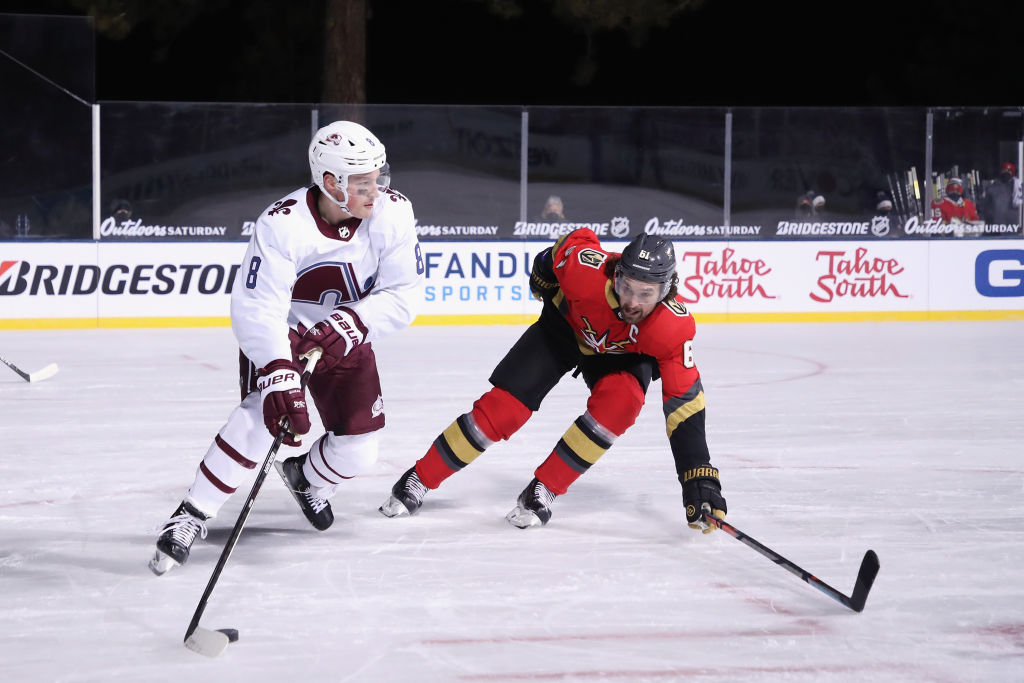
The power play is relatively untouched despite shedding two trusted secondary scorers in Doonskoi (eight power-play points) and Saad (three). The top unit – MacKinnon, Mikko Rantanen, Landeskog, Cale Makar, and usually Nazem Kadri last season – consumes most of the available minutes, suggesting that lineup hopefuls like Alex Newhook and Sampo Ranta will battle for the remaining opportunities. In any case, Colorado should be able to replicate their robust chance creation with the main group responsible for the second-highest rate of expected goals per-60 (7.98) and eighth-best efficiency (22.7%) on the power play last season.
The abrupt exit of talent has sparked doubts about the team’s ability to replicate their Presidents’ Trophy-winning form. Consequently, Colorado’s internal replacements and established stars must continue to develop to maintain their status as a legitimate Stanley Cup contender.
2021-22 Lineup Comparison – Stanley Cup Favourites
For all of the hand-wringing about Colorado’s turbulent offseason, they are still in a strong position relative to other Cup contenders, many of whom also experienced significant losses and changes due to the roster and salary cap restrictions introduced by this summer’s expansion draft and the COVID-19 pandemic.
For comparison, I have used the Wins Above Replacement (WAR) metric provided by Evolving-Hockey. WAR attempts to package a player’s impact in all facets of a game – scoring, playmaking, play-driving, and penalty differential – into one convenient catch-all value, comparing a given player’s impact to that of a replacement-level skater. Single-season WAR can be affected by a small sample size of appearances (most teams have rookies or very few NHL games), ice time, or abnormal streaks of converting (or missing) scoring chances. For goalies, the quality and quantity of scoring chances are considered when adjusting for goals allowed, but the same external factors faced by skaters apply.
For reference, Connor McDavid posted the highest WAR total last season (4.6), and most of the top-50 hover between a value of 2-3 wins-above-replacement. A negative value – if one does little to drive play, fails to score, and takes too many penalties – means they’re actively hurting the team. To demonstrate the metric’s weakness, consider Jared McCann’s 2020-21 season. With a value of 3.2, the Seattle Kraken’s de-facto top center ranked second among NHL skaters last season, buoyed by an unsustainable 15.1 shooting percentage. That’s not to say McCann is secretly awful, but he’s not as impactful as his single-season output makes him out to be.
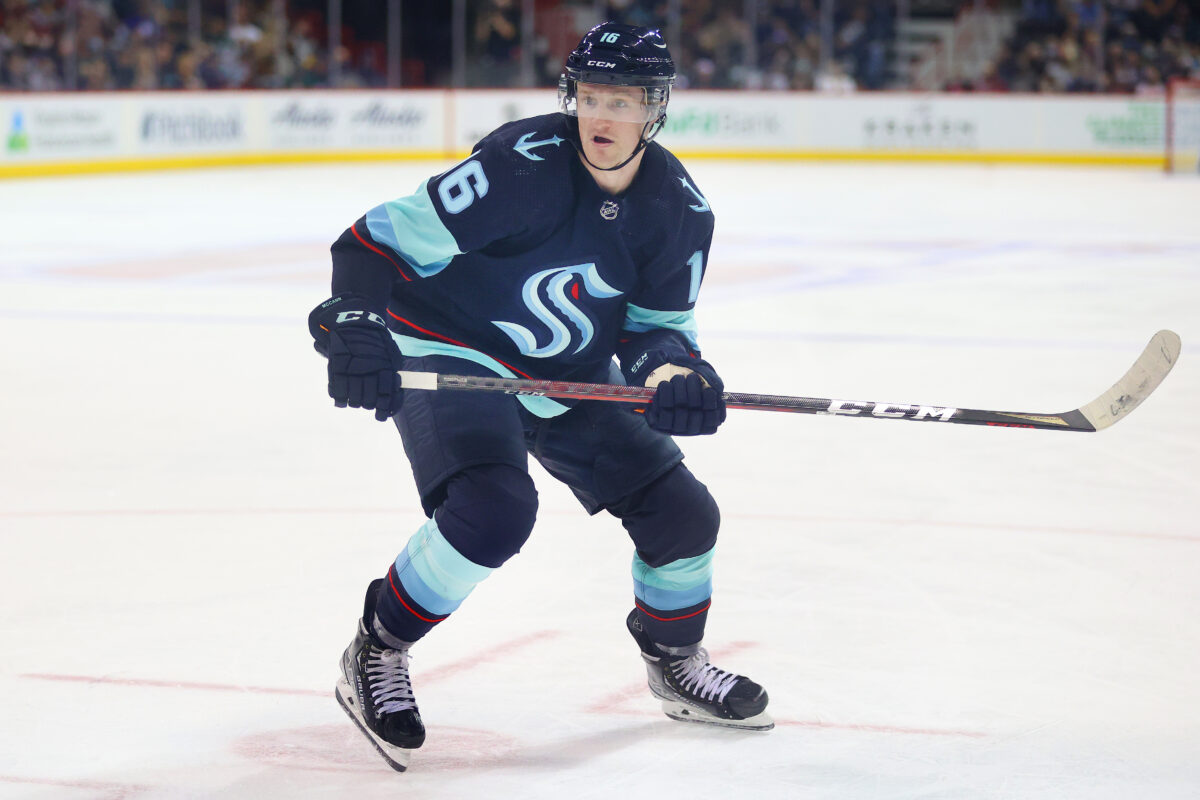
Don’t take the results too seriously. They’re only meant to offer a rough outlook (based on results from 2020-21 or 2019-20 in some cases) of each organization’s lineup in the aftermath of the offseason changes. I scoured DailyFaceoff’s projected lines to come up with each team’s ideal 20-man lineup and made subjective adjustments and substitutions for injuries or healthy scratches where applicable. If you want to explore the intricacies of WAR (my explanation was very primitive), visit Evolving-Hockey’s glossary section. Now, here are five 2021-22 Stanley Cup favorites ranked by total WAR.
| Team | FWD | DEF | G | Total |
|---|---|---|---|---|
| COL | 13.5 | 8 | 0.1 | 21.6 |
| BOS | 8.6 | 6.4 | 3.9 | 18.9 |
| VGK | 9.9 | 4.8 | 3.1 | 17.8 |
| TBL | 9.5 | 3.8 | 2.1 | 15.4 |
| NYI | 6.7 | 2.8 | 5.6 | 15.1 |
I won’t venture into the other team’s results – this is an Avalanche preview after all – but Colorado’s lineup ranks favorably to that of their fellow Cup contenders, heavily driven by their top line and their collection of elite puck-moving defensemen. It’s a testament to their 2020-21 performance that they’re still in the conversation even after suffering heavy losses. They set such a high bar that even after accounting for some regression, they still boast one of the strongest rosters in the league. That said, here’s a look at each part of the roster in isolation to determine why the numbers still have the Avs as the preeminent Cup favorite.
2021-22 Roster Analysis
Legitimate fears about a weakened lineup aside, the Avalanche are still well-equipped to conquer the Western Conference and challenge for the Stanley Cup. From their superstar forwards to their backup goaltender, they still have one of the most complete rosters in the NHL and should approach last season’s success if all goes right. First up: the forward group.
Forwards
Where to start with the forwards? They feasted on their divisional opponents in 2020-21, powering the Avalanche to league-topping per-60 rates in goalscoring (GF), expected goals-for (xGF), and unblocked shots (FF) at five-on-five. Much of the damage was driven by the usual suspects – the top line of MacKinnon, Landeskog, and Rantanen – who controlled 65% of the expected goals-share (third among forward lines with 300 minutes played) and outscored the opposition 35-to-16 at five-on-five. No matter who coaches threw over the boards, they had no answer for the line’s unique blend of size, skill, and tenacity. With the captain re-signing for another eight years, one of the league’s most formidable lines will remain intact.
Individually, MacKinnon scored 65 points in 48 games, finishing third in Hart Trophy voting. Since 2018, the superstar center has averaged 1.29 points per game – the ranked fourth in the NHL – but has no major hardware to show for his efforts. MacKinnon continues to create scoring chances at an elite rate, shooting off the rush, grinding for opportunities out of the cycle, and generating shots and shot-assists in transition, unlike anyone else in the NHL. Except for maybe McDavid, no other skater presents the same versatile threat offensively. He can – and will – get chances from anywhere and create them out of nothing. Considering how seriously he takes his craft, a monster campaign that tops the scoring leaderboards is not unfeasible for him.
You May Also Like:
- MacKinnon’s Home Streak Was a Thing of Beauty for Avalanche
- Avalanche’s Winning Streak Showed Readiness for Playoffs
- Avalanche Firmly in Top Tier of Contenders for 2024 Stanley Cup
- Colorado Avalanche All-Time Starting Lineup
- Avalanche’s 2024 Trade Deadline Additions Finding Early Success
Although Rantanen led the team with 30 goals last season, his main role is getting the puck into dangerous scoring areas with incisive passing. In terms of high-danger passes (from behind the net or cross-slot), Rantanen completed just under three per-60, ranked seventh in the NHL. He manages a high rate of shots anyway, which gives him more time and space in the offensive zone as defenses have to respect the threat he poses as a sniper. It’s frightening to contemplate, but Rantanen still has room to grow as an offensive threat.
However, the combination could never work without the selfless contributions of Landeskog, whose positional awareness and forechecking abilities provide a defensive conscious on Colorado’s top scoring line. He also functions as the line’s net-front presence, completing the third-most deflections on the team while the other two scamper around the offensive zone. What he brings may not show up on the scoresheet (although he scored 52 points in 54 games last season), but it’s required when going toe-to-toe with the league’s best.
With Doonskoi (eighth in scoring) and Saad (10th) leaving holes in the forward depth, Colorado will need the remaining players to contribute and those on the fringes to establish themselves. Kadri and André Burakovsky will return as two-thirds of the second line, leaving a wing spot open for the taking, although it appears as though Nichushkin will start the season in that position.
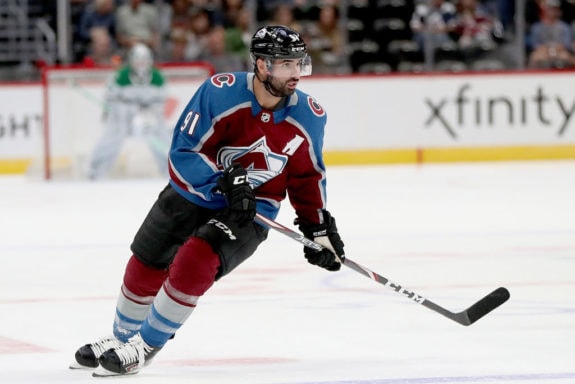
Kadri, in particular, had a disappointing 2020-21 season, scoring four fewer points than the season before despite playing in five more games. He was snakebitten, with his 6.5 shooting percentage (SH%) nearly half of his career average. If he starts finding the net again, Colorado’s scoring depth will immediately improve. Otherwise, he is one of the Avalanche’s best transition players and puck transporters, ranking second on the team in both the rate at which he completes zone entries and his efficiency in maintaining possession while doing so.
Burakovsky’s season was the opposite, as the winger tallied 19 goals off an 18.6 shooting percentage, four full percentage points higher than his career conversion rate. Luckily, he contributes more than just scoring, leading the team in primary shot assists (final pass before a shot is taken) and scoring chances created off the forecheck. He might regress this season, but the 26-year-old is a versatile offensive performer.
Nichushkin and Tyson Jost may not have lived up to the expectations of their draft pedigree, but they are still extremely valuable to Colorado’s overall attack strategy. Their line – flanked by the now-departed Donskoi – led the league in expected-goals share at five-on-five, controlling over 70% of scoring chances and an absurd 86% of goals scored while they were on the ice. Colorado created the most chances off the forecheck and cycle, and the pair recovered the third- and fourth-highest dump-ins per-60 on the team. Their tenacity in the corners was a big reason for the team’s strong overall defense, allowing the fewest shot attempts per-60 in the league. If the opposition can’t leave their zone, they can’t mount an attack, giving Colorado ample opportunity to regroup and recover.
Among the rest of the forward group, the two most prominent rookies – Newhook and Sampo Ranta – tore up the collegiate circuit and were serviceable in their introduction to professional hockey at the end of last season. Both will be given extended looks in attacking roles, and having one or both break out would be a boon for a franchise looking to reload their offensive ranks on the cheap. If Newhook can wedge himself next to Kadri and Burakovsky, his five points in 14 regular-season and playoff games suggests he could make the most of the opportunity.
Related: 3 Avalanche Players Ready to Break Out in 2021-22
Lastly, my one-to-watch would be Logan O’Connor. The undrafted winger scored five points in 22 games last season, but it’s his sterling micro-stat profile that suggests he has much more to offer this season if moved up the lineup. If the Avalanche intend to win through a tactical mix of a rush plus forecheck offense, O’Connor has the tools to succeed in that system. He paces the team in rebound chances, dump-ins recovered and was second in high-danger passes completed behind only Rantanen. Now, success in a sheltered role doesn’t guarantee a seamless transition to increased responsibility, but the Avalanche might have a diamond in the rough on their hands.
Defense
Colorado’s defensive group succeeds by doing very little defending. They managed to achieve top-three rates in almost every meaningful defensive, play-driving, and production-based metric almost solely because of their emphasis on puck possession and dominating in transition. To do so, they leaned heavily on their dynamic triumvirate of Makar, Samuel Girard, and Toews – a trio of defenders unsettlingly comfortable with the puck on their stick. At times, they operate as fourth forwards, overwhelming defenses unacclimated to a tenacious swarming offense.
The Avalanche boasted two of the NHL’s ten most dominant defensive pairings by their share of expected goals, with both pairings of Makar-Toews and Toews-Girard, controlling over 60% of the cumulative total. No matter who patrols the blue line, Colorado dictates play at five-on-five.
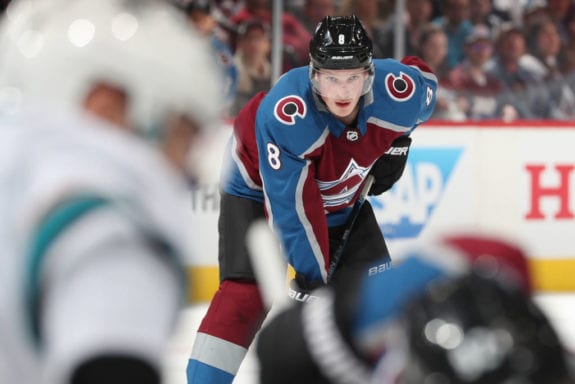
Part of Makar’s brilliance is his ability to rapidly turn a zone exit into a scoring chance, all within the span of a few seconds. His 73% completion of exits led the NHL last season and is a critical component of Colorado’s rapid transition game. When he gathers speed and gallops into the neutral zone, it’s already too late. Even with a heavy workload (ranked second in completed zone entries per-60 ), Makar manages to fashion chances for himself or one of Colorado’s talented forwards. He created the sixth-most high-danger passes per-60 in 2020-21, as well as the fifth most shot-assists among NHL defensemen. Since 2019, he’s accumulated the fourth-most points among defensemen, behind only John Carlson, Victor Hedman, and Roman Josi – heady company. His top-10 rates in shots and expected goals conceded per hour demonstrate he doesn’t forget his defensive responsibilities either.
For a team that took the most shots off the rush last season, having a collection of strong skaters and crisp passers on the backend ensures that their game plan is smoothly facilitated. After Makar, the pair of Toews and Girard offers a similar impact in transition, moving the puck across all three zones with ease.
Both defensemen rank within the top-10 percent of offensive zone entries, while Toews is second in the NHL in the number of exits he completes cleanly while retaining possession (i.e., not dumping it out) or being stripped at the blue line. The forwards can feel comfortable knowing that Toews will get the puck where it needs to be and prepare accordingly. No stranger to roaming around, the former New York Islander also averages nearly a shot off a high-danger pass per-60, meaning he gets into dangerous scoring areas usually reserved for forwards.
Girard regularly spins out of coverage and creates chances in transition, using his vision to complete the most shot-assists on the team. Without much power-play time, he will never approach the point totals enjoyed by Makar (although he is 22nd in points since 2019-20), which is a shame. He impacts the game in so many ways through his playmaking and ability to weave into the offensive zone, functioning as the perfect cog in the Avalanche machine.
Defensively, Toews and Girard are above-average at denying opponents zone entries, breaking up plays, and forcing them to retreat. These denials also create counterattacking opportunities to spring their forwards, capitalizing on chaos and funneling passes into dangerous areas left uncovered.
The remaining three regular spots on the blue line will be occupied by some combination of Bowen Byram, Erik Johnson, Ryan Murray, and Jack Johnson, offering an interesting mix of youth, veterans, and defensive stability. Byram flashed tantalizing potential as a possible member of Colorado’s vaunted puck-moving crew, matching Makar’s proficiency in zone exits albeit in a much, much smaller sample size. Erik Johnson is coming off a significant injury, and it remains to be seen if he can regain his standard level of play. Jack Johnson and Murray will likely split defensive and penalty-kill duties, with the departed Graves formerly a key figure on both fronts. Even with some turnover, the key members remain, ensuring that Colorado’s breakneck style will grace television screens again this season.
Goalies
One of the biggest shocks of the offseason was Grubauer bolting for the Pacific Northwest, inking a six-year, $36-million deal with the Kraken. The departure of the 2021 Vezina finalist leaves a big hole in the crease, but the Avs are hoping that some combination of Kuemper, Pavel Francouz, and Jonas Johansson can mitigate any downturn in performance. As of this writing, Francouz has suffered a lower-body injury, meaning Colorado will ride Kuemper as often as possible until the backup returns. For reference, here are the three goaltenders’ most recent results:
| Darcy Kuemper | Pavel Francouz | Jonas Johansson | |
|---|---|---|---|
| GP | 111 (21) | 36 (69) | 21 (83) |
| SV% | .926 (12) | .922 (26) | .896 (82) |
| PKSV% | .890 (5) | N/A | N/A |
| HDSV% | .835 (23) | .802 (69) | .830 (29) |
| GSAA/60 | 0.28 (13) | 0.19 (21) | -0.57 (80) |
Kuemper has generally been an above-average starter, posting top-20 results in most key metrics since 2018. Yet, his 2020-21 season was a departure, with injuries contributing to a .907 save percentage (SV%) – his worst since 2016-17. He also has the sixth-most goals-saved-above-expected (GSAx) since 2018 but was middle of the pack this season given the quality of chances he faced. The Avalanche can hope that such results are a byproduct of a season wracked by the pandemic rather than an indicator of his diminishing ability. After giving up a promising roster player in Timmins to acquire the 31-year-old goalie, anything less than competence would be a catastrophic return on investment.
In what might be a foreboding omen regarding Colorado’s precarious goaltending situation, I adjusted the minutes-played filter several times before Pavel Francouz and Jonas Johansson were spit out by the database. Both have extensive professional experience in Europe and the American Hockey League (AHL), but neither has much of a resume at the NHL level. Francouz challenged for the starting job in his debut season but suffered an injury that shelved him for the entire 2020-21 campaign. How he’ll look when he returns is anybody’s guess, an unnerving reality for a team that considers themselves a Stanley Cup contender.
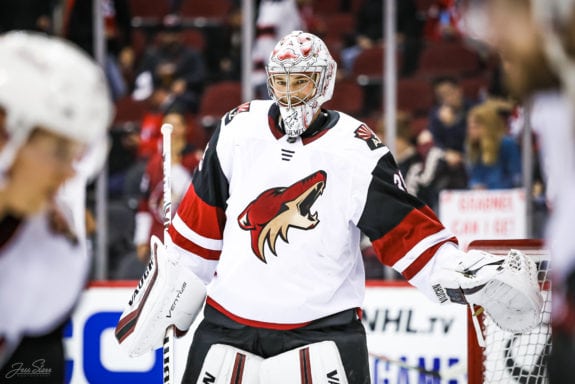
Third-string Johansson was acquired from the Buffalo Sabres after the Avalanche were struck by injuries and subpar performances from their other backups. He posted a .913 SV% in the eight games he played after the trade, giving Grubauer some critical relief before the playoffs. However, he was atrocious with the equally miserable Sabres, with a .888 SV% in his brief tenure with the club, suggesting his solid performance in a pinch may have been a mirage. After watching consecutive postseason runs end partially due to shaky goaltending, another trade deadline deal may be on the horizon for the Avalanche if things start to go south.
On balance, the team’s goaltending is solid, but their uncertain health remains an underlying concern heading into this season. Luckily, the Avalanche can shield their goalies from a heavy workload, as the team ranked either first or second in the NHL last season in key defensive metrics measuring chance-quality, shot-quantity, and high-danger chances allowed. The weak West Division may have contributed to those results, but Colorado hovered around the top-10 the season before. If the team receives even average goaltending, an otherwise stacked roster should carry the team over the dreaded second-round hurdle. Failing that, serious questions will be asked of key decision-makers in the organization.
Stanley Cup or Bust for the Avalanche
Not to be reactionary, but Colorado has little margin for error this season. Nathan MacKinnon is approaching the end of his sweetheart deal ($6.3 million per season until the end of 2022-23), which sets the timer on Sakic’s ability to construct a roster around one of the most valuable contracts in the league. Other key contributors like Landeskog and Toews will soon hit the wrong side of 30, meaning a drop in production will likely follow.
Now, the Avalanche boast one of the finest collections of under-25 talent in the NHL, so they should retain their place among the league’s upper echelon for the foreseeable future. Even so, it’s foolish to dismiss the added benefit of MacKinnon’s contract. Luckily, they face little real competition in the Western Conference – save for the Golden Knights – meaning their road to the Cup Final is relatively open. Can they capitalize on the opportunity? Do you believe?
Data from Corey Sznajder, Evolving Hockey, Hockey Reference, and Natural Stat Trick.